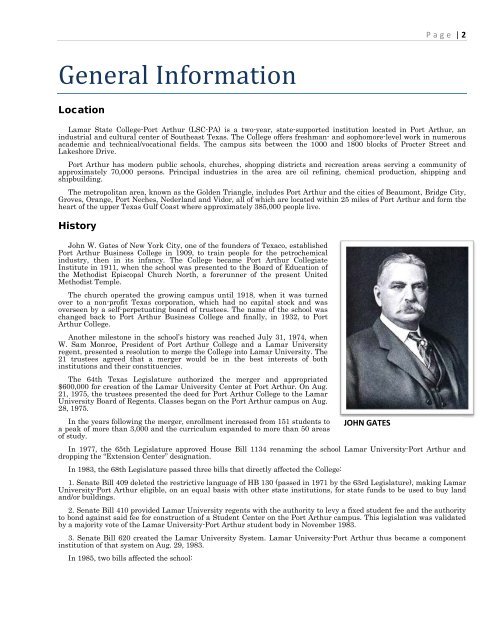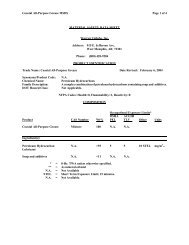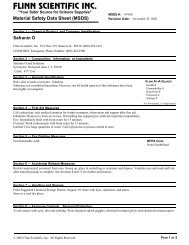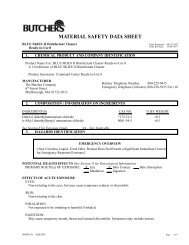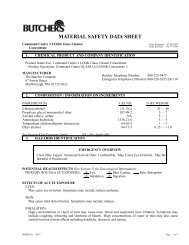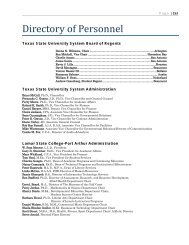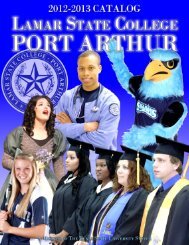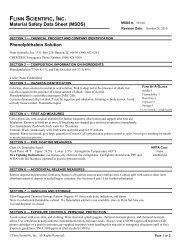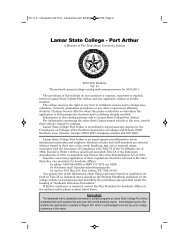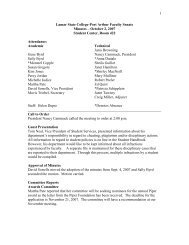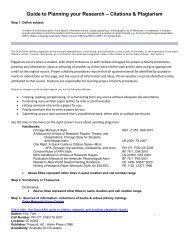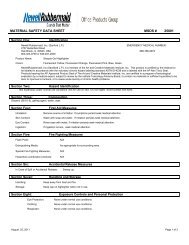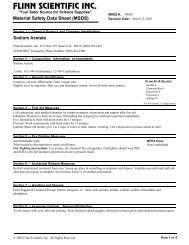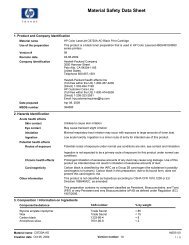Download Full Catalog ~ 6.6 MB - Lamar State College - Port Arthur
Download Full Catalog ~ 6.6 MB - Lamar State College - Port Arthur
Download Full Catalog ~ 6.6 MB - Lamar State College - Port Arthur
You also want an ePaper? Increase the reach of your titles
YUMPU automatically turns print PDFs into web optimized ePapers that Google loves.
Page | 2<br />
General Information<br />
Location<br />
<strong>Lamar</strong> <strong>State</strong> <strong>College</strong>-<strong>Port</strong> <strong>Arthur</strong> (LSC-PA) is a two-year, state-supported institution located in <strong>Port</strong> <strong>Arthur</strong>, an<br />
industrial and cultural center of Southeast Texas. The <strong>College</strong> offers freshman- and sophomore-level work in numerous<br />
academic and technical/vocational fields. The campus sits between the 1000 and 1800 blocks of Procter Street and<br />
Lakeshore Drive.<br />
<strong>Port</strong> <strong>Arthur</strong> has modern public schools, churches, shopping districts and recreation areas serving a community of<br />
approximately 70,000 persons. Principal industries in the area are oil refining, chemical production, shipping and<br />
shipbuilding.<br />
The metropolitan area, known as the Golden Triangle, includes <strong>Port</strong> <strong>Arthur</strong> and the cities of Beaumont, Bridge City,<br />
Groves, Orange, <strong>Port</strong> Neches, Nederland and Vidor, all of which are located within 25 miles of <strong>Port</strong> <strong>Arthur</strong> and form the<br />
heart of the upper Texas Gulf Coast where approximately 385,000 people live.<br />
History<br />
John W. Gates of New York City, one of the founders of Texaco, established<br />
<strong>Port</strong> <strong>Arthur</strong> Business <strong>College</strong> in 1909, to train people for the petrochemical<br />
industry, then in its infancy. The <strong>College</strong> became <strong>Port</strong> <strong>Arthur</strong> Collegiate<br />
Institute in 1911, when the school was presented to the Board of Education of<br />
the Methodist Episcopal Church North, a forerunner of the present United<br />
Methodist Temple.<br />
The church operated the growing campus until 1918, when it was turned<br />
over to a non-profit Texas corporation, which had no capital stock and was<br />
overseen by a self-perpetuating board of trustees. The name of the school was<br />
changed back to <strong>Port</strong> <strong>Arthur</strong> Business <strong>College</strong> and finally, in 1932, to <strong>Port</strong><br />
<strong>Arthur</strong> <strong>College</strong>.<br />
Another milestone in the school’s history was reached July 31, 1974, when<br />
W. Sam Monroe, President of <strong>Port</strong> <strong>Arthur</strong> <strong>College</strong> and a <strong>Lamar</strong> University<br />
regent, presented a resolution to merge the <strong>College</strong> into <strong>Lamar</strong> University. The<br />
21 trustees agreed that a merger would be in the best interests of both<br />
institutions and their constituencies.<br />
The 64th Texas Legislature authorized the merger and appropriated<br />
$600,000 for creation of the <strong>Lamar</strong> University Center at <strong>Port</strong> <strong>Arthur</strong>. On Aug.<br />
21, 1975, the trustees presented the deed for <strong>Port</strong> <strong>Arthur</strong> <strong>College</strong> to the <strong>Lamar</strong><br />
University Board of Regents. Classes began on the <strong>Port</strong> <strong>Arthur</strong> campus on Aug.<br />
28, 1975.<br />
In the years following the merger, enrollment increased from 151 students to<br />
a peak of more than 3,000 and the curriculum expanded to more than 50 areas<br />
of study.<br />
In 1977, the 65th Legislature approved House Bill 1134 renaming the school <strong>Lamar</strong> University-<strong>Port</strong> <strong>Arthur</strong> and<br />
dropping the “Extension Center” designation.<br />
In 1983, the 68th Legislature passed three bills that directly affected the <strong>College</strong>:<br />
1. Senate Bill 409 deleted the restrictive language of HB 130 (passed in 1971 by the 63rd Legislature), making <strong>Lamar</strong><br />
University-<strong>Port</strong> <strong>Arthur</strong> eligible, on an equal basis with other state institutions, for state funds to be used to buy land<br />
and/or buildings.<br />
2. Senate Bill 410 provided <strong>Lamar</strong> University regents with the authority to levy a fixed student fee and the authority<br />
to bond against said fee for construction of a Student Center on the <strong>Port</strong> <strong>Arthur</strong> campus. This legislation was validated<br />
by a majority vote of the <strong>Lamar</strong> University-<strong>Port</strong> <strong>Arthur</strong> student body in November 1983.<br />
3. Senate Bill 620 created the <strong>Lamar</strong> University System. <strong>Lamar</strong> University-<strong>Port</strong> <strong>Arthur</strong> thus became a component<br />
institution of that system on Aug. 29, 1983.<br />
In 1985, two bills affected the school:<br />
JOHN GATES


